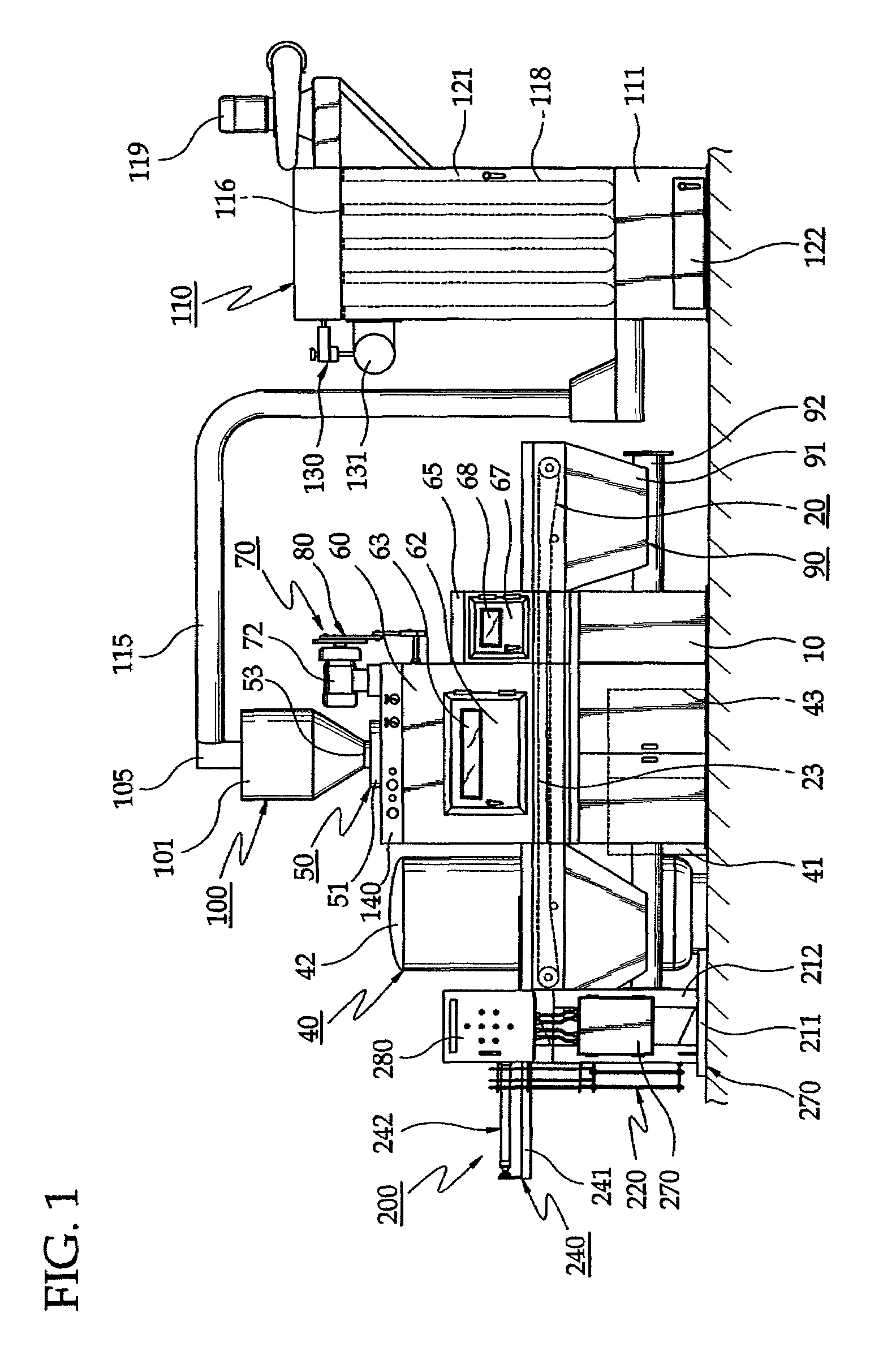Semiconductor wafer regenerating system and method
a technology of semiconductor wafers and regenerating systems, applied in the direction of abrasive blasting machines, manufacturing tools, abrasive equipment, etc., can solve the problems of reducing the efficiency of regenerating systems, and reducing so as to reduce the planarity and purity of the wafer, reduce the cost of regenerating systems, and reduce the effect of regenerating
- Summary
- Abstract
- Description
- Claims
- Application Information
AI Technical Summary
Benefits of technology
Problems solved by technology
Method used
Image
Examples
Embodiment Construction
[0035]Referring to FIGS. 1 and 2, a semiconductor wafer regenerating system (referred to as “wafer regenerating system” hereinbelow) according to a preferred embodiment of the present invention includes a frame 10 above which is provided a mesh conveyor 20 for transferring silicon wafer 1. Also, above the frame 10 are provided a blasting booth 60 and a cleaning booth 65 enclosing upper side and the lateral side of mesh conveyor 20 in a line. Inside the blasting booth 60 is provided a grit blaster which blasts grits along with compressed air onto the silicon wafer to remove patterns formed on the silicon wafer. Meanwhile, inside the cleaning booth 65 is provided a cleaning nozzle which blows off impurities remaining on the wafer surface using compressed air.
[0036]On the other hand, underneath the mesh conveyor 20 is provided a collecting unit 90 which collects grits bypassing the wafer, grits bounced by the wafer after colliding against the wafer to remove the patterns, scraps of gri...
PUM
| Property | Measurement | Unit |
|---|---|---|
| thick | aaaaa | aaaaa |
| grain size | aaaaa | aaaaa |
| diameter | aaaaa | aaaaa |
Abstract
Description
Claims
Application Information
 Login to View More
Login to View More - R&D
- Intellectual Property
- Life Sciences
- Materials
- Tech Scout
- Unparalleled Data Quality
- Higher Quality Content
- 60% Fewer Hallucinations
Browse by: Latest US Patents, China's latest patents, Technical Efficacy Thesaurus, Application Domain, Technology Topic, Popular Technical Reports.
© 2025 PatSnap. All rights reserved.Legal|Privacy policy|Modern Slavery Act Transparency Statement|Sitemap|About US| Contact US: help@patsnap.com



